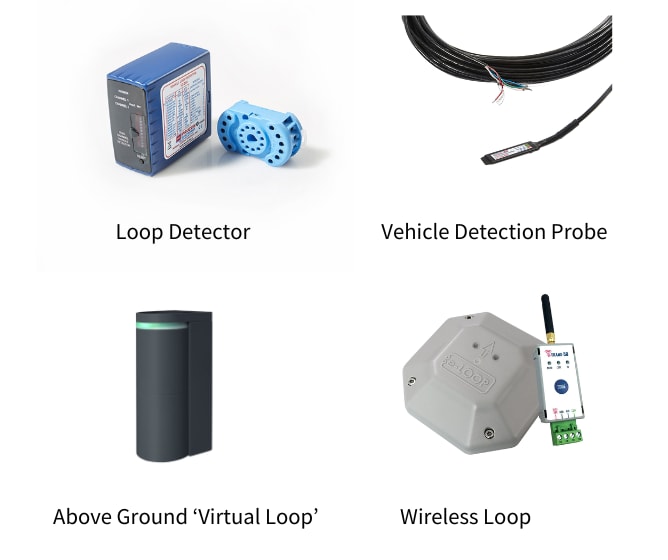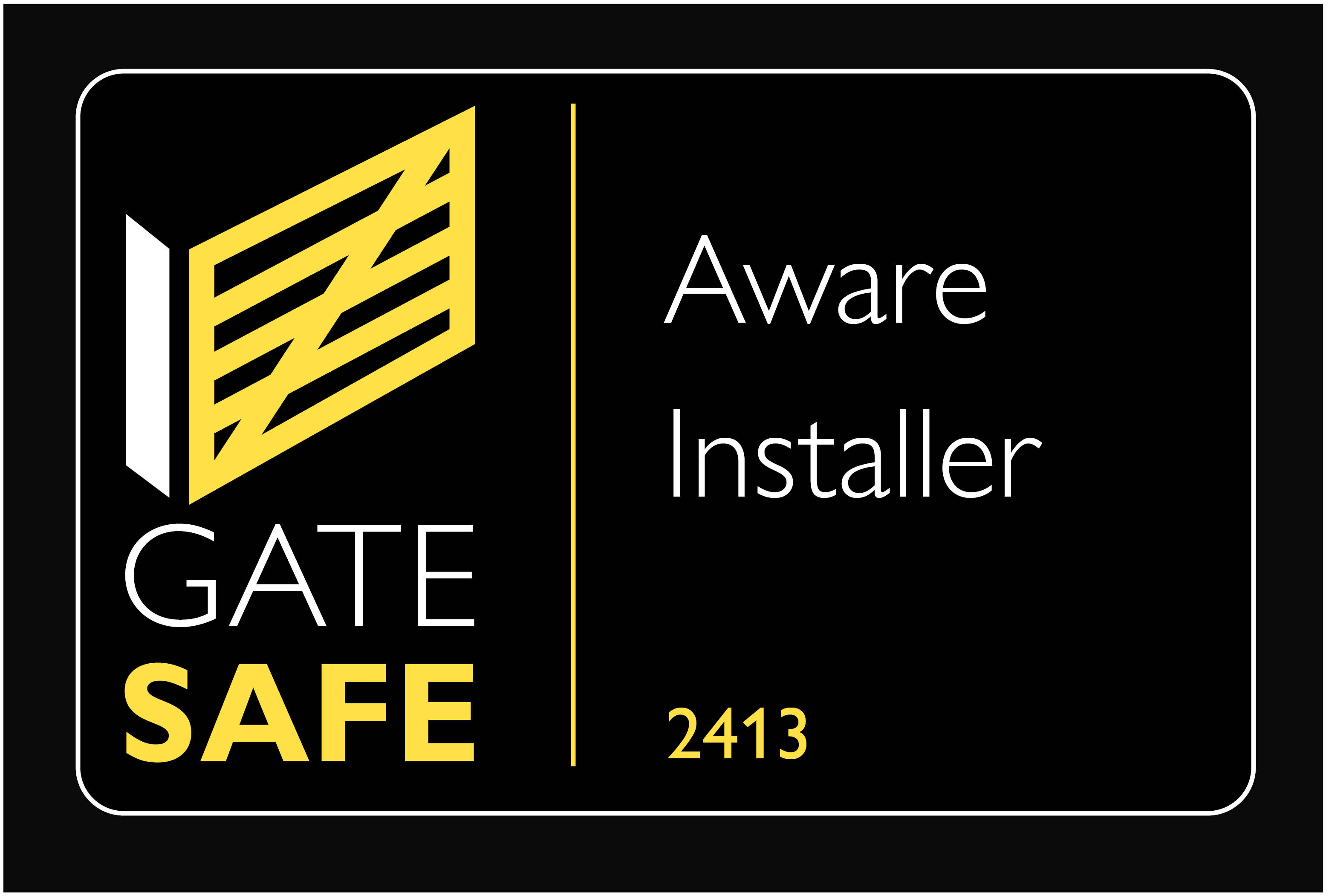First Facts: Everything you need to know about Loop Detectors

What is a Loop Detector?
A device used to open your gate or barrier without the need to press a button or call a device. It can also be used as a safety device to prevent the system from closing when a vehicle is present.
How does a Loop Detector work?
A conventional loop detector uses a magnetic coil to detect vehicles and then sends a trigger to the gate or barrier. Recent options for above-ground systems operate using microwave technology or wireless magnetic fields.
Is a Loop Detector easy to install?
Depending on the system you opt for, installation methods and ease will vary. A conventional loop needs the road surface to be dug out and the loop cable buried at a depth of around 30mm-50mm with 3 loops of twisted cable. Above-ground options can be a lot less time-consuming.
What First Fence Offers
We can supply a classic loop detector and loop cable, or we can supply several above-ground detection systems as well as probe-type devices.
Our Top Tips
Think about the product you want to use on your project or premises before you have the groundworks done. You don’t want to be digging it back up.
Understand the number of operations your device is expected to do per day. Battery-operated systems may not be suitable for high usage sites.
Product Variations: What different options are available?

Loop Detector
Available in either 24v or 230v options, as well as either single channel or dual channel. Requires a loop cutting into the ground and burying, then connecting up to the controller.
Vehicle Detection Probe
The probe has more flexibility than a normal loop detector. The probe can be buried under the road surface; alternatively, it can be positioned at the side of the system or even mounted above the ground next to the passage of the vehicles. This device must be accompanied by a separate control unit.
Above Ground "Virtual Loop"
Fitted above ground with flexibility, it can be positioned on a gate post, a barrier cabinet, enclosure or wall/fence. Offers up to an 8m range of detection. The setup is all done using a smartphone app.
Wireless Loop
A battery-powered wireless system, the unit bolts down to the road surface (in-ground options also available). Uses a magnetic field and a radar detection system. Easily programmable.
Pros & Cons of our Detectors
Loop Detector
Pros of Loop Detectors
- Versatile: a loop detector can be used in a wide variety of applications, both residential and commercial.
- Weatherproof: Loop detectors are not affected by external weather conditions.
- Proven Technology: reliable and functional, this technology has been used for many years.
Cons of Loop Detectors
- Installation: can be obtrusive as no access is available during the burying of the cable, and can also be time-consuming.
- Maintenance: As the loop is buried under the road surface, should the system require maintenance or repair, you may need to dig the surface back up.
- Expense: whilst generally cheaper to purchase up front, the installation time and work involved can create additional expense.
Vehicle Detection Probe
Pros of Vehicle Detection Probe
- Flexibility: installation location can be in-ground or above-ground, making it a good option for both new applications and retrofitting to existing.
- Cable Length: available in several different lengths of cable, meaning it is suitable for even the biggest of entrances.
Cons of Vehicle Detection Probe
- Installation: can be tricky depending on where you install. It can be fitted in the ground, but we would recommend using a conduit to run the cable through.
- Temperature: has been known to be affected by adverse drops in temperature.
Wireless Vehicle Detection Sensors
Pros of Wireless Vehicle Detection Sensors
- Installation: no messy or time-consuming groundwork - simply bolt to the surface of the road.
- Maintenance: as these devices are fitted on the surface, any maintenance is easily done without having to dig out the surface.
- Non Disruptive: due to installation being quicker than other methods, the entrance/exit won’t be out of operation for long
Cons of Wireless Vehicle Detection Sensors
- Power supply: as these are battery-powered, if they are operating on a busy entrance/exit, then battery life may be short.
- Longevity: fitted on the road surface, meaning potential to be damaged by vehicles, unlikely, but possible.
Above-Ground Vehicle Detection Sensors
Pros of Above-Ground Vehicle Detection Sensors
- Flexibility: can be fitted in numerous locations such as on a post, wall, barrier cabinet, etc, meaning it is suitable for all types of gates and barriers.
- Installation: no digging out of the road surface, simply cables back to the control panel, and then setup can be done in as little as 30 minutes using the smartphone app.
- Non-disruptive: as this isn’t fitted on or under the road surface, this is the least disruptive option. The device can be fitted while the entrance is still operational and then can be set up in as little as 30 minutes.
Cons of Above-Ground Vehicle Detection Sensors
- Initial Cost: more expensive up front to purchase than a loop detector or probe.
- Range: has a range up to 8m - meaning on large openings, may need more than 1 unit to cover the entire span.
Commonly Asked Questions
What do I need to fit the device?
This depends on the device you opt for. If it is a loop detector, you will require a masonry cutting tool or similar, cables, conduit and epoxy compound or mastic to cover the loop. For other options, you may only need a drill and a screwdriver.
Can I use this for safety and free exit?
Some devices can be used for both, some can do one or the other. A dual-channel loop detector can be connected to 2 x loop cable sections, meaning it can be used for both at the same time. A single channel will do one or the other. Above-ground systems will do one or the other.
How do I know which system is best for my application?
You need to weigh up the pros and cons above. Think about the following: new application or retrofit? How many estimated operations per day? Maintenance requirements. How quickly the device needs to be installed and operational. Is it for safety and/or free exit? Accessibility for installation.
Brands Available
Procon Electronics
24v & 230v Single and Dual Channel loop detector 10m, 15m & 30m magnetic vehicle detection probes
Optex
OVS-02GT Above-Ground Vehicle Detection Sensor
AES Global
E-Loop domestic surface-mounted vehicle detector, E-Loop commercial surface-mounted vehicle detector, E-Loop in-ground commercial vehicle detector

Contact Us
For more information, please call our friendly sales team on 01283 512 111.
Download our PDF version of First Facts: Everything you need to know about Loop Detectors.












